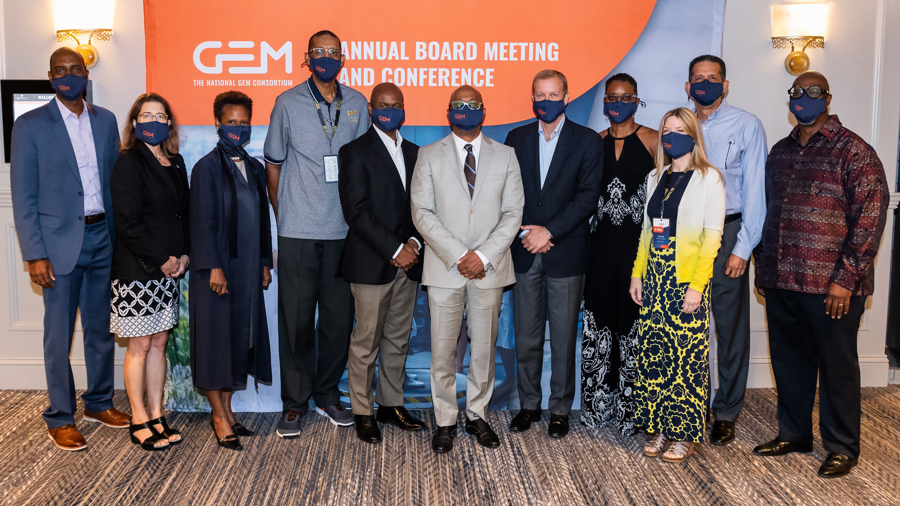March is here and you are anxiously awaiting notification letters about graduate school admission. Have no fear, they are surely on the way! This month’s blog will provide you with information on how to prioritize and select the graduate school that is best suited for your needs. The decision making process outlined in the current blog, in combination with the previous content covered in this blog-series, will ultimately increase the probability of you successfully earning your Ph.D. Previously, we discussed the importance of applying for funding (‘Tis the Season to Apply For Funding), how to develop a list of prospective graduate schools and the graduate school application process (Selecting Your Top 10 Graduate Schools: Apply and Conquer), and what questions to ask during graduate school visits (The Blue Chip Graduate Student: Making the Most of Your Campus Visitation). The prior blogs were meant to prepare you for this pivotal moment: selecting the advisor and academic institution where you will spend the next five to seven years of your life.
I will preface this blog by saying that the schools you are accepted into should be the only institutions that are on your radar moving forward. If you do not receive acceptance into a particular institution, do not waste time and energy dwelling on the decision. Know that a different, and potentially more fitting, school is meant for you at a different institution. It is best to use the non-acceptance letter/email as motivation to work hard and develop your skills elsewhere. Just like the March Madness collegiate basketball tournament, selecting the right graduate school is a tournament that can be won by any team who has earned a spot, so never count an institution out!
We will get started by creating a list that is comprised of institutions into which you have earned acceptance. Open up the list of graduate schools that you created based on the previous blog, Selecting Your Top 10 Graduate Schools: Apply and Conquer. If you did not follow the previous blog and do not have a list, do not worry, you can download my template from here. Create a new tab titled “Accepted,” and add the following columns: “My Original Rank” and “School.” Next, we will take advantage of the prioritization criteria that I introduced in #RTPhD Selecting a Graduate School, and add the following columns in the document: ”Funding,” “Advisor/Lab Relationship,” “Supporting Cast,” “Research,” “Prestige,” and “Location.” The following newly added column definitions and their prioritization (1 – 6) are below:
- Funding – the amount of funding an institution provides and the stipulations associated with receiving these funds. Some programs will offer Teaching Assistantships (TAships) which will require you to teach, grade, and/or hold office hours during the semester in order to receive your funding. Others will offer Research Assistantships (RAships) or Fellowships which are guaranteed for a certain amount of years. Ideally, acceptance letters should offer you a 5 year funding package which will include funds to cover the cost of tuition as well as a living stipend. I will provide more details on funding later in this blog.
- Advisor/Research Lab Relationship – arguably the most important indicator in predicting your success in a doctoral program. You should take advantage of the answers to most of the questions you asked in The Blue Chip Graduate Student: Making the Most of Your Campus Visitation to determine how a program ranks in this area. Specifically, questions: 2.1, 2.3-2.9, 2.13-2.14, 3.1-3.3, 3.5-3.7, and 3.11.
- Supporting Cast – these are the people at the respective institution who will help you to maintain stability and provide you with unconditional support while you progress through your program. Your supporting cast can be people in your lab, friends in other departments, graduate student organizations, or faculty who have a vested interest in your success.
- Research – the research projects that are readily available for you to work on and your current interest level in these projects. If the current research projects do not interest you, do not be alarmed. If you identify a good advisor, he or she will later guide you to a research project that piques your interest while you are at the institution. Questions: 1.5-1.7, 2.2, 3.3 from The Blue Chip Graduate Student: Making the Most of Your Campus Visitation can assist you with prioritizing your institutions on your list based on the domain of research.
- Prestige – even if you would like to attend the most prestigious institution on your list, the reputation of a graduate school’ should not outweigh your ranking of items 1-4 on this list. If the programs that you are accepted into rank fairly close to one another on items 1-4, then prestige can be used to break the tie. .
- Location – the importance of location depends on the type of person that you are and whether you have specific geographical restrictions. If you are the type of person who can live in any type of weather and does not need to be close to family, then leaving location as the lowest priority is perfectly acceptable. On the contrary, if you need to live close to your current location because you have children, then location should be number 5 on your priority list, and prestige gets moved to number 6.
Now that we know how to prioritize the institutions, fill in “My Original Rank” and “School” for all of the institutions that you received acceptance letters from. Note that in the template, I assumed you applied to 10 institutions as shown in the “Applying” tab, and assumed that you received acceptance letters from 5 institutions as provided in the “Accepted” tab. Skip a row after the last school on your list and name the first cell “Priority”. For each of the six aforementioned priorities, place the priority number under the respective column (Reverse the ranking number to place more weight on the more important priority, for e.g. Funding = 6, Advisor/Lab Relationship = 5, Supporting Cast = 4, etc.). Skip another row, and make the next few rows mirror “My Original Rank” and “School”. For each priority next to each institution at the bottom of the list, multiply the top cell for the institution by the “Priority” cell. For clarity, please view the template to see how this should look. Lastly, add a column named “Best School for Me” as the last column. Sum the rows at the bottom of the list for each institution. For example, the formula for the first institution of the template is “SUM(C10:H10)”. The bottom part of the list, A10:I14 in the template should no longer be edited directly. It will be modified indirectly by making changes to the top part of the list, C2:H5 in the template.
For each priority level, you will rank each institution against the other. For example, if you received five acceptances, then each institution will rank from 1 to 5, with “1” being the “best” and “5” being the “worst”. So if an institution offered the best funding package they would receive a “1” for funding. I recommend starting this process by filling in the “Prestige” column since it is simply the “Rank” column from the “Applying” tab. If you recall, the values for the “Rank” column were derived from an outside source such as the U.S. News and World Report. For the “Prestige” column, I recommend re-ranking these with respect to one another. For example, if the schools you are accepted into rank 3, 10, 35, 55, and 72, they will be re-ranked as: 1, 2, 3, 4, 5, respectively. Now do the same for “Funding,” “Advisor/Lab Relationship,” “Supporting Cast,” “Research,” and Location.
Ranking “funding” is highly dependent on what is described in the acceptance letter. I have provided a screenshot above from my acceptance letter from the University of Florida and highlighted areas of importance. Notice that the letter mentions the fellowships that I received along with additional funding that is provided directly through the department. Toward the end of the letter, it discusses tuition waivers and insurance. Each university will have different variations of this, but after accounting for the cost of tuition, you should expect to receive nothing less than $15,000 a year. Of course, if an institution offers more money and less of a work burden (e.g., fewer mandatory TAship hours), then it should rank higher on your priority list. Be sure to factor in the cost of living in a particular city. Compare the funding package that is outlined in your offer letters to the answers that you received from faculty members about funding during your campus visit. The questions were outlined in The Blue Chip Graduate Student: Making the Most of Your Campus Visitation; questions 1.1-1.4, 2.10-2.12, 3.4.
Ranking your institutions in regard to the rest of the prioritization criteria should be straightforward. More details on how to prioritize an institution for each priority level discussed above (items 1 through 6) can be found in #RTPhD Selecting a Graduate School. In addition, the 30+ questions you asked during your campus visitation should also provide clarity on how to prioritize your potential schools. When completed, the lower the number is in the “Best School for Me” column, the more that school is tailored to your needs. Stated differently, schools with a lower number may be a better fit for you. If you would like to see an example of a completed list of schools along with their associated prioritization, I have provided one here. In relation to March Madness, be prepared for the unexpected and remain open minded to all schools you receive acceptance letters from. Hopefully, this blog assisted you with selecting the right matchup for you to win the ultimate objective, the tournament (Ph.D). Good look to you in these endeavors, and I wish you well on your journey towards your doctoral degree!
By: Dr. Corey E. Baker. This blog was written while he was a GEM Fellow and graduate student at the University of Florida. Dr. Baker is an Assistant Professor in the Department of Computer Science at the University of Kentucky. Follow him on Twitter: @DrCoreyBaker. His personal website is coreyebaker.com.






